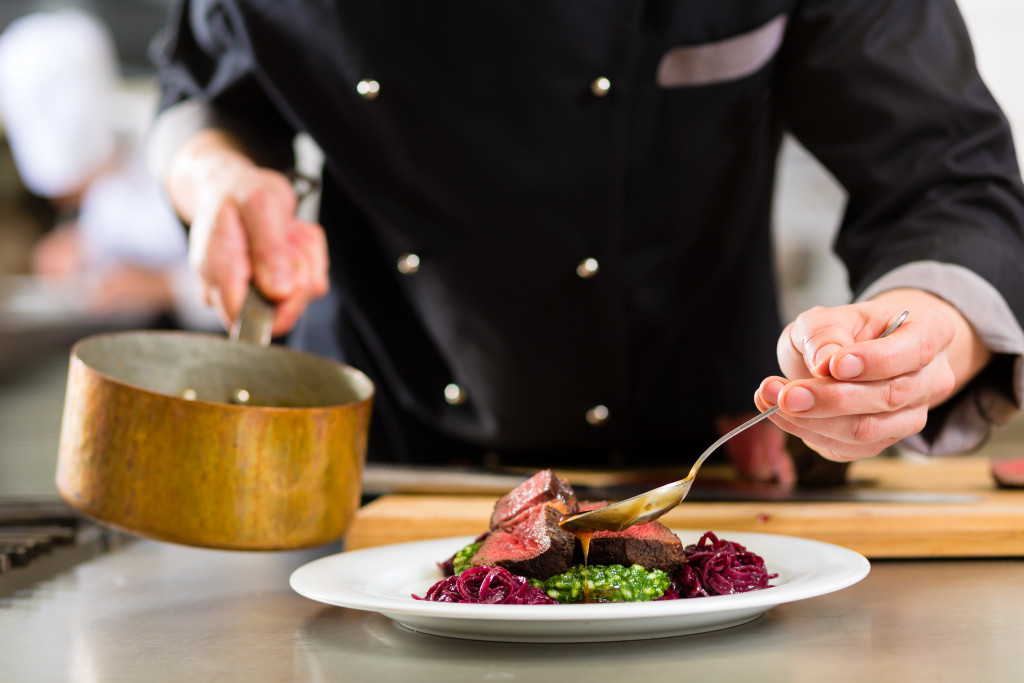- Restaurants can increase efficiency by introducing digital ordering methods and automating the order process.
- Automated cookers, pre-prepping ingredients, breading machines, and mixers can all help restaurants save time while maintaining food quality.
- Customers can also benefit from a pickup window that lets them order ahead and pick up their meals quickly.
- By investing in efficient technology and systems, restaurants can be as convenient as fast food chains without sacrificing flavor or freshness.
Fast food restaurants offer convenience that most traditional restaurants cannot compete with. According to Statista, the global fast food market is estimated to exceed $671 billion, indicating its popularity and growth. Fast-food restaurants have become more efficient in recent years due to the rise of technology, enabling customers to order and pay for their items quickly and easily. This is especially true with the introduction of apps that allow customers to order their food remotely, such as Grubhub or DoorDash.
Customers can also save time by choosing fast food over traditional restaurants because there are fewer steps involved in the process. Customers can order and receive meals from a fast-food restaurant within minutes without making a reservation or waiting for a table. Further, fast-food restaurants typically do not require tipping or additional fees like those charged at some restaurants, which adds extra convenience for customers on a budget.
Restaurants might want to get the convenience factor that fast-food chains have, but it can be challenging without sacrificing food quality. Fortunately, these fast-food strategies can be adapted to create a more efficient restaurant experience that customers will love.
Streamlining the Order Process

Fast food restaurants have become incredibly popular due to their speed and convenience, and it is no surprise that other restaurants are looking to emulate this success. Streamlining the order process can help restaurants copy fast food chains in terms of getting orders fast without sacrificing quality. Restaurants can do this by introducing digital ordering methods, such as an app or online ordering system, which streamlines the process for customers.
Another way restaurants can mimic fast food success is by implementing a queue system for orders, where customers can order at multiple points throughout the restaurant instead of one central location. This would enable more charges to be taken simultaneously and reduce wait times. Additionally, investing in technology like tablets or kiosks could allow customers to enter their orders directly into the system without waiting for their meals to be prepared.
Automating a Few Food Preparation Processes
Fast food restaurants have become incredibly popular due to their speed and convenience; other restaurants want to emulate this success. Automating a few food preparation processes can help restaurants serve customers faster while still maintaining the quality of their meals. By investing in efficient technology or systems, restaurants can increase the speed of service without sacrificing flavor or freshness. Here are a few ways that restaurants can automate food preparation processes for faster service:
Pre-Prepping Ingredients
One of the most time-consuming parts of preparing a meal is prepping ingredients. This step typically involves washing, chopping, and measuring the necessary ingredients before they can be cooked. By implementing an automated system that pre-preps ingredients beforehand, restaurant chefs would save time and energy during the cooking process. Additionally, pre-prepped elements could be stored safely until needed, ensuring that everything is as fresh as possible when served to customers.
Automated Cookers
Automated cookers are another way restaurants can improve their service while keeping their food quality high. These cookers are programmed with recipes from experienced chefs to prepare meals quickly and efficiently. The cookers also ensure dish consistency by following precise instructions when a meal is ready. With automated cookers, restaurant chefs would save time on basic tasks like sautéing vegetables or flipping burgers on the grill without sacrificing quality or flavor.
Breading
Breading often takes a long time to prepare, as each piece needs to be dipped in batter and then freshly breaded before it can be cooked. To save time and labor costs, restaurants can automate the breading process with high-quality automatic batter breading machines that coat each piece with a uniform layer of crumbs and spices quickly and easily. Once the parts are covered in breading, they can be refrigerated until needed for cooking, ensuring maximum freshness when served.
Mixing
Of course, no meal would be complete without sauces, seasonings, and other ingredients. To save time on these steps, restaurants can invest in automated mixers programmed with recipes from experienced chefs. These mixers will ensure flavor consistency while reducing the time needed to make a meal.
Cleaning Dishes

Cleaning dishes is often time-consuming, but automated dishwashers can help restaurants save time and labor costs. Automatic dishwashers are programmed to wash each item with hot water and detergent at the appropriate temperature and pressure, reducing the amount of manual work needed for cleaning dishes.
Another way to copy fast food convenience is by introducing a pickup window that lets customers order their meals ahead of time and pick them up when they are ready. This would allow customers to order, pay for, and receive their meals quickly without waiting in line.
Final Thoughts
By implementing these strategies, restaurants can copy fast food chains in terms of speed and convenience while maintaining quality. With some work and effort, restaurants can become as convenient as fast food chains without sacrificing flavor or freshness.
